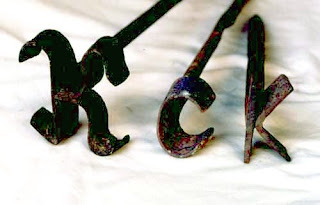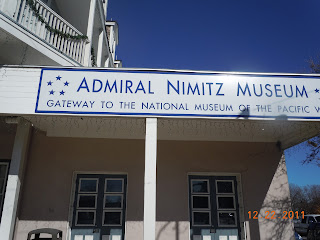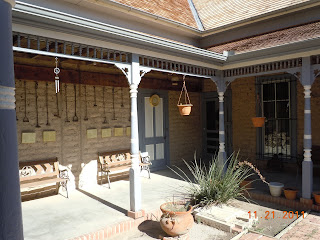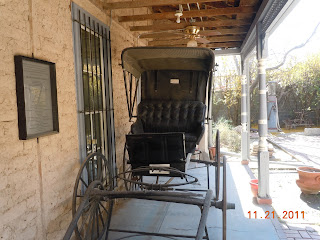 |
| Cattle branding, circa 1888 |
There was a time when livestock grazed on the plains before the erection of fences. At the same time there were many cattle raisers and the livestock naturally became interspersed. The need to identify whose cattle belonged to whom when it came time to drive them to market was obviously essential.
A cattle brand is a unique marking placed on each individual animal that identifies it's owner. The story of cattle branding is not one which originated in North America. Just as with the cattle themselves, the process of cattle branding was brought over to North America by the Spaniards. The story goes back to the vaqueros, the Spanish cowboys, who played a big part in the Spaniards exploration and settlement of the American southwest.
Some Excellent Venues in Texas to Visit
If you're traveling in the Dallas-Fort Worth area or on a Texas vacation, there are several excellent museums which tell the story of cattle branding. One is in Denton Texas just north of Dallas. This is the Courthouse-On-The-Square Museum, 110 W. Hickory, Denton Texas.
The other museum which tells much about the story, use and methods of livestock branding is the Cattle Raisers Museum, 1301 West 7th St. in Fort Worth Texas. This Fort Worth museum originally opened in 1980 and in 2009 was relocated to the Fort Worth Museum of Science and History within Fort Worth's historic cultural district. The museum's mission is to increase the awareness of our country's ranching heritage.
History of Branding Cattle
The practice of branding cattle became widespread in nations like Spain which had large regions for cattle grazing. When the Spaniards traveled to the North American continent and colonized New Spain (present day Mexico), they brought with them both livestock and the methods they used to identify them. It should be noted that although the Spaniards brought cattle branding to North America, it was not they who actually invented the process. Historians have found scenes of oxen being branded on hieroglyphics on Egyptian tombs as early as 2,700 BC.
 |
| Vaquero painting, circa 1830, public domain |
Like many things, progress in the methodology of branding cattle developed. While some ranches still heat branding irons in a fire; others use an electric branding iron or electric sources to heat a traditional branding iron. The branding rod is only applied long enough to burn away the animal's hair and leave a permanent mark. If it's applied too long it can cause a wound and the animal could get an infection. The amount of time needed to successfully put on the brand depends on the animal's skin thickness. Horses, for example, have thinner skin and the application is much shorter than with a steer. A proper brand should be the color of saddle leather when the brand is removed. Rocking the branding iron during the process will help insure uniformity on all areas of the brand.According to the South Dakota State Brand Board "Good brands can be achieved by using properly heated irons. The iron, when heated properly, should appear a light ash color. Red hot irons should not be used. Acids and other branding fluids are not to be used for branding livestock. Apply the iron with a light pressure and remove it when the animal moves. Trace the brand until it appears like new boot leather.According to most branding experts, the most recommended kind of hot branding iron should be of quarter-inch iron made to the desired shape. Small cattle should be branded with irons about 3″ tall and larger adult stock can be about 4.”
Another method for livestock branding is freezing. Freeze branding is now in much use by ranchers. When super-cold or chilled branding irons are applied to the hide of the animal, the pigment-producing cells are destroyed or altered. The hair that grows back after this application is white in color. Although this method is not totally foolproof, it does have distinct advantages. The freeze method of cattle branding leaves a more legible mark as opposed to the hot branding iron. This method also causes less damage to the animal's hide. The refrigerant is usually dry ice. When using this method, the animal to be branded must be securely restrained in a squeeze chute or what is called a headgate. Calves are usually thrown on the ground on their sides. The cattle brand applied by freeze branding also goes through several changes immediately after application. The brand will initially disappear within seconds and then it will appear puffy. For some time it may be difficult to even see but then after a period of about three to four weeks the cattle brand will take on a permanent appearance.
Modern Methods of Cattle Branding
 |
| Branding irons, courtesy NPS |
Propane branders are yet another method used. These units of course need no other power source such as electricity but are heated using propane gas. Propane branders heat up much more quicker and to higher temperatures than other types of branders and because of this requires more caution. Branding heads with interchangeable characters are used for propane branders. One big advantage of the propane method of cattle branding is that it is very portable.
The Rustler's Running Iron
The explanation of cattle branding wouldn't be complete without some mention of cattle rustlers and how they could alter livestock brands. It's an interesting fact that in the very early west, cattle rustling was widespread and almost accepted as a way for someone to build his herd. It's also a fact that many cattle ranchers even got their start in this way. Stealing an unbranded calf not following it's mother was not even considered rustling. But the large cattle barons, this included the massive XIT Ranch in the Texas panhandle region, decided it was costing them a lot of money and from that point on cattle rustling was seen as a very serious crime.
This is where the two types of branding irons entered the picture. One was the stamp iron that included the full brand and then there was the running iron which employed a hooked tip that could be used to change or make any type of brand. The crime of rustling was so serious in the west that someone being caught in the possession of a running iron could be strung up on the nearest tree. In fact, vigilante parties were a common thing in the old west.
The Story of Cattle Kate
 |
| Ellen Liddy Watson |
The cattlemen, part of the Wyoming Stock Growers Association, began fencing in parts of her land and then in 1889 a range detective from one of the ranches accused she and a male friend of taking some of their branded cattle.
What was initially planned as an arrest turned ugly when a group took both Ellen and her close friend Jim Averill and lynched both. Six men were arrested for the lynching but never made it to trial because rampant witness intimidation. The Wyoming Stock Growers Association were also involved in the much chronicled Johnson County War where their hired guns planned a raid on suspected rustlers near present day Buffalo Wyoming.
Although cattle rustling goes on even today, when the open plains began to be fenced in with the arrival of settlers, the epidemic proportions of rustling in the old west days decreased considerably.
































